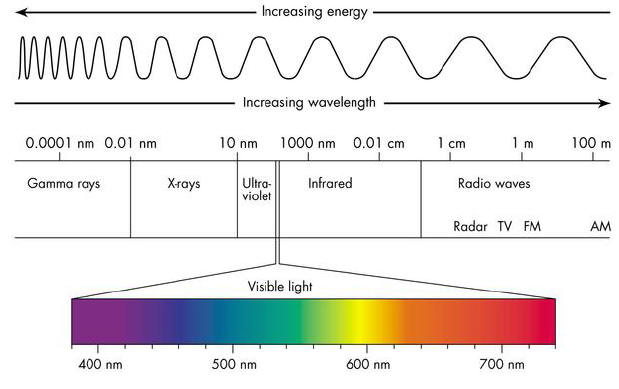
#121
Posted 06 July 2012 - 04:02 PM
#122
Posted 06 July 2012 - 04:10 PM
That's one hell of a placebo effect, huh?If you click the thumbnails they will expand and you can get a better view. I have never had a black hair anywhere on my entire body It has always been brown/red until the other day.
#123
Posted 06 July 2012 - 04:16 PM
That's one hell of a placebo effect, huh?If you click the thumbnails they will expand and you can get a better view. I have never had a black hair anywhere on my entire body It has always been brown/red until the other day.
That's what I was thinking!!! I don't even know if it's possible to grow black and red hair at the same time! If it is I have never seen it before.
#124
Posted 06 July 2012 - 04:18 PM
I guess I have more melanin now?
#125
Posted 06 July 2012 - 04:46 PM
If you click the thumbnails they will expand and you can get a better view. I have never had a black hair anywhere on my entire body It has always been brown/red until the other day.
Awesome, thanks for sharing! That may be the first photographic evidence of C60oo affecting a human.
Edited by Rob Wegner, 06 July 2012 - 04:51 PM.
#126
Posted 06 July 2012 - 06:10 PM
When ultraviolet rays penetrate the skin and damage DNA, thymidine dinucleotide (pTpT) fragments from damaged DNA will trigger melanogenesis[10] and cause the melanocyte to produce melanosomes, which are then transferred by dendrite to the top layer of keratinocytes.
There was some speculation about how c60 could *enhance* the damage caused to DNA by some light in the ultraviolet spectrum around here
http://www.longecity.../page__st__1140
in comments like this one:
To those currently taking c60/OO : are you taking special precautionnary measures to protect yourself from UV rays? Looks like sun exposure could lead to pretty much the opposite effect than the one expected. http://www.ncbi.nlm..../pubmed/9839628
I wonder how important this is... Its summertime right now, so beach season etc.... Avoiding UVs would be pretty much impossible for me.
SHould one live like a vampire to benefit from the C60? The Baati lab rats were most probably NOT exposed to any kind of intense UV source.
There is a fairly well known optical effect where C60 increases the high order harmonics of lasers(1). This concerns me greatly with respect to UV exposure, since it might possibly magnify the effects. I wouldn't be surprised if the rats in the study has close to zero UV exposure during the trial (and the fur gives some protection also).
(I realize this study uses lasers, and also C60 films but I don't think that is too unlike having ones skin and lower lipid layer populated with the C60 since that is where the light will strike)
(1)High-order harmonic generation from fullerene plasma
T. Ozaki, R. A. Ganeev, L. B. Elouga Bom and J. Abdul-Hadi
Institut national de la recherche scientifique - Centre Énergie, Matériaux et Télécommunications, 1650 Lionel-Boulet, Varennes, Québec J3X 1S2, Canada
ozaki@emt.inrs.ca
(see attachment graph)
Harmonic spectra obtained in the plasma plumes produced from (1) bulk carbon target, (2) C60 powder- rich epoxy, and (3) C60 film
However there is also this:
http://www.ncbi.nlm....les/PMC2676811/
Which states:
Fullerenes are also used for cytoprotective action against UVA irradiation (Xiao et al 2006). The ultraviolet A radiation (320–400nm) generates reactive oxygen species, which have a biological effect on human skin cells, leading to cell damage or cell death. Once again the radical scavenging nature of water soluble fullerene derivative namely Radical Sponge® (C60 with poly(vinylpyrrolidone)) was utilised to protect human ore mammalian cells against oxidative stress, through catalytic dismutation of superoxide. The ability of Radical Sponge® to enter into depth of human skin epidermis due to its stability towards oxidative decomposition makes it more reliable than Vitamin C and enables the prevention of both UV skin-injuries and skin aging, without photosensitization and cytotoxicity.
But this just says it protects against the oxidation. Oxidation is one thing, but direct DNA damage by the UV rays is quite another. I don't see anything about C60 protecting against that, and if it somehow magnifies UVA or B into the UVC range or something more horrible then it could be quite a problem!
In looking at this I found an interesting study on UV protection:
http://www.ncbi.nlm....pubmed/15330502
perhaps it has to do with c60 interaction with UV light. have you been in the sun?
Edited by buckwheats, 06 July 2012 - 06:12 PM.
#127
Posted 06 July 2012 - 06:18 PM
#128
Posted 06 July 2012 - 08:04 PM
Sooo Bad or Good? I have lots of black hairs so I can't confirm whether I have new ones or not... DNA damage doesn’t sound good to me...
#129
Posted 06 July 2012 - 08:40 PM
.I have been in the sun. Another thing that's different for me is I have always peeled anytime I get in the sun. Since the c60 I have been able to keep a tan I have not peeled one time
ah that makes sense because if the c60 were enhancing DNA damage by UV light, then one would expect melanogensis to increase wherever the UV hit where C60 was - not just around the hair follicles, but in the surrounding skin too.
And not peeling is a sign that the melanin has increased there as well.
I guess just use sunscreen if you are worried that this is what may be happening. it's probably a good idea to already use it anyway.
Edited by buckwheats, 06 July 2012 - 08:47 PM.
#130
Posted 06 July 2012 - 09:41 PM
I have black and red and white and grey and brown hair all in fairly close proximity to each other if I grow a beard. thus I do not grow a beard.That's one hell of a placebo effect, huh?If you click the thumbnails they will expand and you can get a better view. I have never had a black hair anywhere on my entire body It has always been brown/red until the other day.
That's what I was thinking!!! I don't even know if it's possible to grow black and red hair at the same time! If it is I have never seen it before.
#131
Posted 06 July 2012 - 09:52 PM
There was some speculation about how c60 could *enhance* the damage caused to DNA by some light in the ultraviolet spectrum around here
http://www.longecity.../page__st__1140
If you scroll down through that page, you will find my refutations. I do not think it is a problem.
#132
Posted 06 July 2012 - 09:54 PM
#133
Posted 06 July 2012 - 10:08 PM
#134
Posted 06 July 2012 - 10:40 PM
#135
Posted 07 July 2012 - 11:30 PM
#136
Posted 07 July 2012 - 11:59 PM
I donated a pint of blood just this morn (somebody is getting a bonus) and had blood pressure and pulse checked... 116/67 with pulse of 64...pretty typical for me. Just started my 2nd bottle of EVOO/C60 an hour before.
I wonder if it might be best not to donate blood when taking something as experimental as C60?
If it turns out to have any deleterious effects, or increases stress in some way, it could be dangerous for the sick person who receives the blood.
#137
Posted 08 July 2012 - 03:43 AM
I wonder if it might be best not to donate blood when taking something as experimental as C60?
If it turns out to have any deleterious effects, or increases stress in some way, it could be dangerous for the sick person who receives the blood.
Good point. Of course, it might save their life, too. Still, the decision to take an experimental substance shouldn't be made for them, even if most people would make the wrong decision on their own. Or... maybe we're the ones making the wrong decision. Time will tell.
#138
Posted 08 July 2012 - 05:45 AM
#139
Posted 08 July 2012 - 05:48 AM
#140
Posted 08 July 2012 - 07:42 AM
It appears to me that the presence of C60 is stimulating the production of superoxide dismutase. As it sponges up oxides on it's own, those oxides aren't really getting metabolized, they remain largely intact but attached to the C60 molecule. Perhaps their continued presence, even though 'parked' on C60 ensconced within the cell wall, somehow incites the cells to produce more antioxidants on their own. Dramatically increased SOD/catalase production would correspondingly reduce hydrogen peroxide levels, which would in turn produce the effects we're seeing with hair coloration and skin tone. It could explain most if not all of the other anti-aging effects as well.
#141
Posted 08 July 2012 - 09:13 AM
I think looking at hair color changes in terms of melanin type is too superficial of an approach. At a more basic level, what we're looking at is gene expression affected by hydrogen peroxide levels.
It appears to me that the presence of C60 is stimulating the production of superoxide dismutase. As it sponges up oxides on it's own, those oxides aren't really getting metabolized, they remain largely intact but attached to the C60 molecule. Perhaps their continued presence, even though 'parked' on C60 ensconced within the cell wall, somehow incites the cells to produce more antioxidants on their own. Dramatically increased SOD/catalase production would correspondingly reduce hydrogen peroxide levels, which would in turn produce the effects we're seeing with hair coloration and skin tone. It could explain most if not all of the other anti-aging effects as well.
So then why not take superoxide dismutase supplements, such as Cell Guard by Biotec Foods?
I gave their Biovet SOD to my poodle and he lived to be 17 yo.
Did the rats in the Baati study show notable SOD levels and/or reduced hydrogen peroxide levels?
#142
Posted 08 July 2012 - 12:06 PM
Increasing the cell's own mitochondrial production of anti-oxidants is on the order of a thousand times more effective than ingesting an anti-oxidant.
#143
Posted 08 July 2012 - 12:18 PM
#144
Posted 14 July 2012 - 08:47 PM
Do you have pictures where we can see your beard before you started c60?>>Photo(s)?
Here you go !!
For your information (not sure it is very useful): I have 3 mice with 3 different colors (one is black everywhere, one is black everywhere except the belly where it is white, one is black and brown), it seems their hair look better since they are taking C60oo, but the color has not changed. I do not put them directly in the sun and... they are mice
Edited by AgeVivo, 14 July 2012 - 08:50 PM.
#145
Posted 15 July 2012 - 12:04 AM
I have 3 mice with 3 different colors (one is black everywhere, one is black everywhere except the belly where it is white, one is black and brown), it seems their hair look better since they are taking C60oo, but the color has not changed. I do not put them directly in the sun and... they are mice
Mice do eventually develop gray hair, and I will guess that it's caused by the same mechanism as human graying; a loss of catalase in the melanin-generating cells, leading to oxidative damage. Since C60 is a potent antioxidant, I wonder if it might interrupt or even reverse this process? Maybe the mice have better looking hair because it is a bit more pigmented? That's not exactly the same thing that jg saw, where his hair seemed to get darker than it ever was, so maybe there's something else going on.
#146
Posted 15 July 2012 - 12:47 AM
Update: Since the night that I was up all night I have stopped taking the c60. My bottle only has 2 or 3 tablespoons left in it and I want to save those for a couple months down the road. Nothing new to report since stopping it the soreness in my tongue has almost went away, and I still feel pretty good.
#147
Posted 15 July 2012 - 02:55 AM
http://www.drkaslow....r_analysis.html
Hair is a site of excretion for essential, nonessential and potentially toxic elements. In general, the amount of an element that is irreversibly incorporated into growing hair is proportional to the level of the element in other body tissues. Therefore, hair analysis may provide an indirect screening test for physiological excess, deficiency or maldistribution of elements in the body. Clinical research indicates that hair levels of specific elements, particularly potentially toxic elements such as cadmium, mercury, lead and arsenic, are highly correlated with pathological disorders. For such elements, levels in hair may be more indicative of body stores than the levels in blood and urine.
#148
Posted 15 July 2012 - 04:05 AM
I'm thinking your hair color change could be your body eliminating the C60 via the hair follicle route. I know that they can test for past drug use and lead poisoning by analyzing hair. Maybe the renal route isn't particularly effective so the hair route is the default.
I dunno. According to Baati's pharmacokinetics measurements, the C60 in plasma was cleared in a few days. Some of that clearance was the C60 compounds partitioning into membranes, but it's known to be eliminated through the bile ducts. Baati gives two references to this. So I don't think that C60 is going to be forced to only come out in the hair, at such a high concentration as to produce a dark black color, because it has other more conventional ways to be eliminated. Still, the black color is unusual for jg, so I guess it would take a hair analysis to know for sure. More than one resveratrol user reported dark beard hairs showing up, and I've seen it happen on myself for no apparent reason. Not to the extent that jg saw, though. I still lean toward a biochemical event rather than the black color being from a high C60 concentration. That would take a lot of C60, and I don't think compounds get into hair in more than trace amounts.
#149
Posted 15 July 2012 - 12:53 PM
Unfortunately I do not have any before pictures that are close up enough to show my individual beard hairs. I am not the most photogenic person literally my family has had "family photos" once in the last 6 yrs. My wife bugs me about it but I have never liked taking pics.
Come on! No picture of you? No facebook picture with a long beard on vacations
NB: I made an error in my last post in this thread: the 3rd mouse is white and brown, not black and brown (typing error while reading this thread)
#150
Posted 21 July 2012 - 06:34 PM
http://en.wikipedia....s#Melanogenesis
When ultraviolet rays penetrate the skin and damage DNA, thymidine dinucleotide (pTpT) fragments from damaged DNA will trigger melanogenesis[10] and cause the melanocyte to produce melanosomes, which are then transferred by dendrite to the top layer of keratinocytes.
There was some speculation about how c60 could *enhance* the damage caused to DNA by some light in the ultraviolet spectrum around here
http://www.longecity.../page__st__1140
in comments like this one:
To those currently taking c60/OO : are you taking special precautionnary measures to protect yourself from UV rays? Looks like sun exposure could lead to pretty much the opposite effect than the one expected. http://www.ncbi.nlm..../pubmed/9839628
I wonder how important this is... Its summertime right now, so beach season etc.... Avoiding UVs would be pretty much impossible for me.
SHould one live like a vampire to benefit from the C60? The Baati lab rats were most probably NOT exposed to any kind of intense UV source.
There is a fairly well known optical effect where C60 increases the high order harmonics of lasers(1). This concerns me greatly with respect to UV exposure, since it might possibly magnify the effects. I wouldn't be surprised if the rats in the study has close to zero UV exposure during the trial (and the fur gives some protection also).
(I realize this study uses lasers, and also C60 films but I don't think that is too unlike having ones skin and lower lipid layer populated with the C60 since that is where the light will strike)
(1)High-order harmonic generation from fullerene plasma
T. Ozaki, R. A. Ganeev, L. B. Elouga Bom and J. Abdul-Hadi
Institut national de la recherche scientifique - Centre Énergie, Matériaux et Télécommunications, 1650 Lionel-Boulet, Varennes, Québec J3X 1S2, Canada
ozaki@emt.inrs.ca
(see attachment graph)
Harmonic spectra obtained in the plasma plumes produced from (1) bulk carbon target, (2) C60 powder- rich epoxy, and (3) C60 film
However there is also this:
http://www.ncbi.nlm....les/PMC2676811/
Which states:
Fullerenes are also used for cytoprotective action against UVA irradiation (Xiao et al 2006). The ultraviolet A radiation (320–400nm) generates reactive oxygen species, which have a biological effect on human skin cells, leading to cell damage or cell death. Once again the radical scavenging nature of water soluble fullerene derivative namely Radical Sponge® (C60 with poly(vinylpyrrolidone)) was utilised to protect human ore mammalian cells against oxidative stress, through catalytic dismutation of superoxide. The ability of Radical Sponge® to enter into depth of human skin epidermis due to its stability towards oxidative decomposition makes it more reliable than Vitamin C and enables the prevention of both UV skin-injuries and skin aging, without photosensitization and cytotoxicity.
But this just says it protects against the oxidation. Oxidation is one thing, but direct DNA damage by the UV rays is quite another. I don't see anything about C60 protecting against that, and if it somehow magnifies UVA or B into the UVC range or something more horrible then it could be quite a problem!
In looking at this I found an interesting study on UV protection:
http://www.ncbi.nlm....pubmed/15330502
perhaps it has to do with c60 interaction with UV light. have you been in the sun?
In thinking about this more, I think it would actually be a good thing to push to UV light energy into the higher harmonics. It is the low end of the scale that is problematic. So one possible way the C60 could act as a sunscreen beyond just scavenging free radicals from oxidative damage is to (possible) push some of the energy into the higher visible light spectrum which would be less (or not even) damaging to the skin as far as DNA damage is concerned. MIght still get a 'burn' if it gets into the Infrared range, I guess though...but I'm thinking this would be much less problematic for the body to deal with than the DNA damage.
Thoughts?


Also tagged with one or more of these keywords: c60, buckyballs, fullerene, buckyball
6 user(s) are reading this topic
0 members, 6 guests, 0 anonymous users



















































